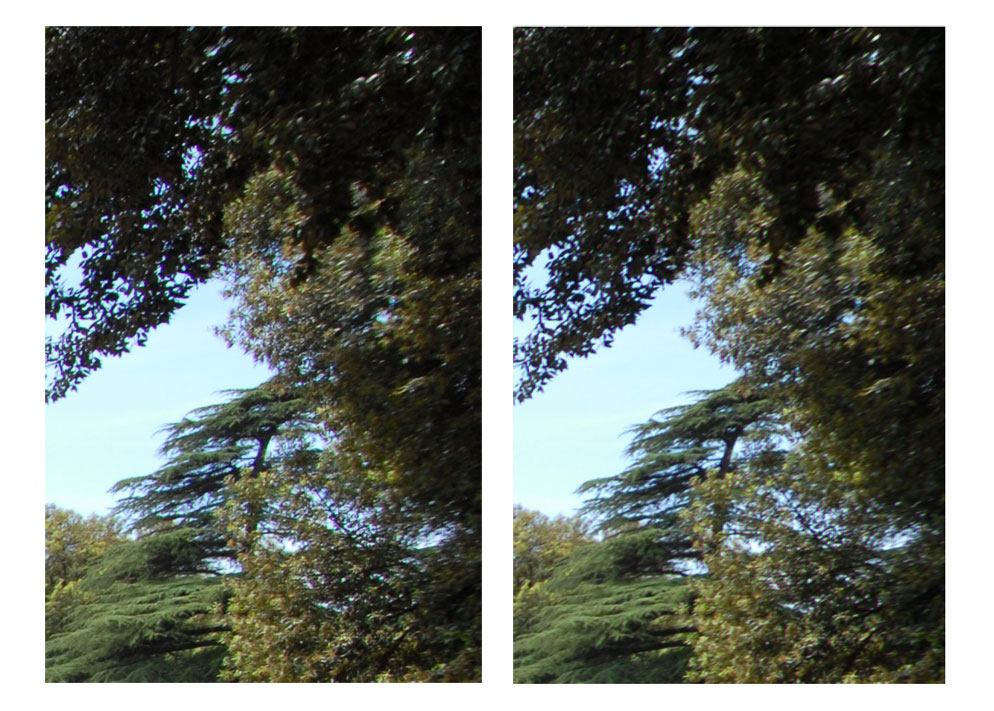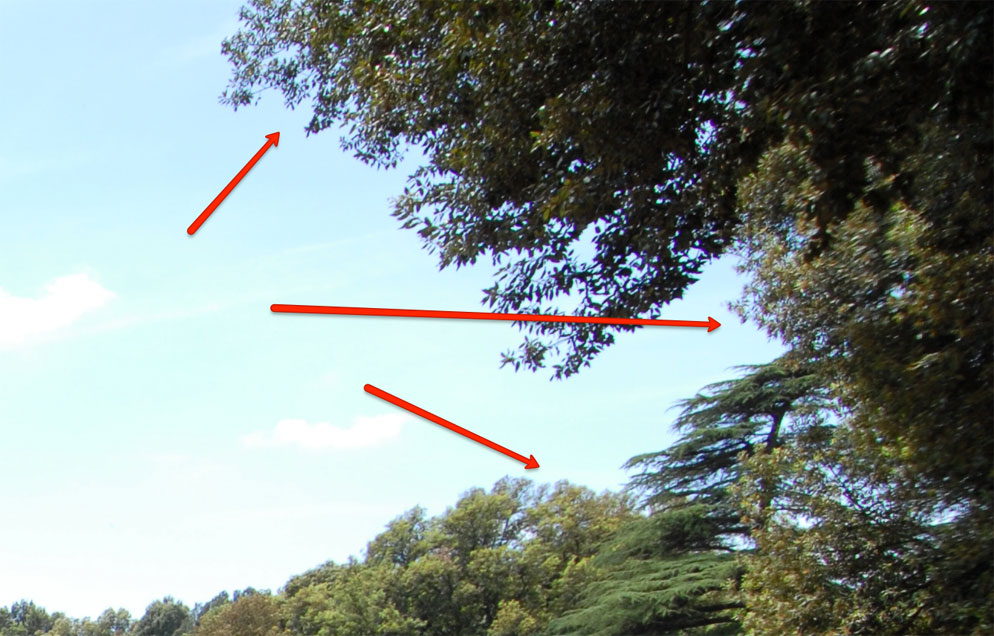Chromatic Aberration
Chromatic aberration is a phenomenon in which light rays passing through a lens focus at different points, depending on their wavelength. There are two types of chromatic aberration: axial chromatic aberration and lateral chromatic aberration.
Axial chromatic aberration is a variation in the length of each wavelength of light and lateral chromatic aberration is a variation in the magnification of the different colors of light; becoming more visible at the image periphery. Axial chromatic aberration results in blurred colors in front of and behind the focus position due to the differences in each color’s focal point. It can be noticeable at the peripheries of extremely bright portions of an image. Lateral Chromatic Aberration is the cause of color fringing. It is only seen at the edges of an image.
Lateral chromatic aberration is reduced to some degree by combining different lens elements with different refractive indexes, but optically speaking, it cannot be completely eliminated. In addition to red and its complimentary color cyan, and blue and its complimentary color yellow, some lenses may exhibit complex color fringing that combines these two primary types. It is greatly reduced by low-dispersion ED glass.
Newer Nikon D-SLRs have a built-in auto lateral chromatic aberration correction feature. It is automatically applied to images, and is not user selectable.
Because chromatic aberration is more often seen in images that are shot with wide apertures, using smaller f/stops is one way that you can try to keep your images free from chromatic aberration. Another instance where chromatic aberration is seen is when photographing astrophotography with certain lenses such as the 58mm, and focusing on an object not in the center of the frame.
Nikon Capture NX2 software has a lateral chromatic aberration correction feature that can be found in the Camera and Lens Correction Menu. Click here for more details on using the tool.
Axial chromatic aberration is applied to JPG, TIFF and NEF images in Nikon View NX (version 1.3.0 onwards) and with NEFs in Capture NX2 (version 2.2.0 onwards). In addition to the automatic correction, there is a manual adjustment slider.
Nikon Capture NX-D software allows you to correct for lateral color aberration and axial color aberration, under the camera and lens corrections tool.
Other software editing programs such as Adobe Photoshop also have a Chromatic Aberration correction option.








